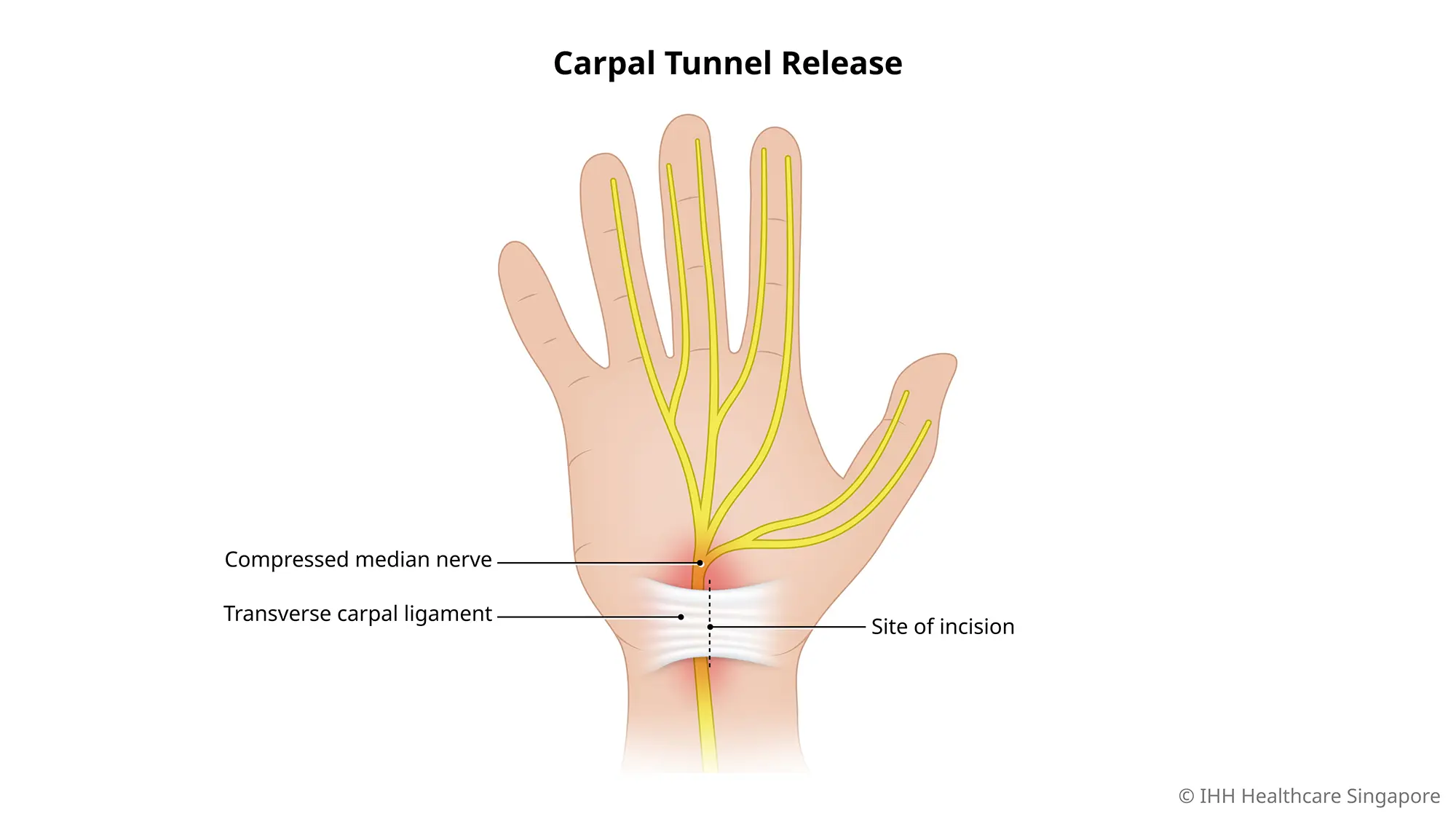Carpal Tunnel Release
What is carpal tunnel release surgery?
Carpal tunnel release surgery cuts the carpal ligament to reduce pressure on the median nerve. The carpal ligament is one of the tissues that connect the bones in your wrist together and the nerve runs through your wrist to your hand.
Treatment for carpal tunnel syndrome usually depends on the severity of its symptoms. Your doctor may recommend carpal tunnel release surgery as a treatment option if you experience severe and persistent symptoms.
The operation is usually done through a small cut on the palm of your hand, near your wrist, or by keyhole surgery.
How it works
In a carpal tunnel release procedure, your doctor will cut through the ligament that is pressing down on the carpal tunnel. This allows more room for the median nerve and tendons to pass through the tunnel, alleviating pain and improving function.
Why do you need carpal tunnel release?
Surgery for carpal tunnel syndrome is usually performed if you have had moderate to severe symptoms that lasted for 6 months or longer.
Carpal tunnel syndrome symptoms include:
- Tingling or numbness in your hand or fingers. If you experience tingling or numbness, you can shake your hand or wrist to relieve these symptoms. However, they may recur and grow more frequent or severe over time.
- Tingling or numbness that travels up the arm. You may experience these sensations when you are using your hand to grip something, such as a steering wheel or mobile phone. In some cases, it may be severe enough to affect your sleep.
- Weakness or lack of sensation in your hand. You may have difficulty holding or grasping things, or find yourself dropping things as these muscles are also controlled by the median nerve.
- Pain or muscle cramps in your hand. You may experience these symptoms if you have severe or advanced carpal tunnel syndrome. You may notice them only at night, but as your condition deteriorate, you may experience these symptoms during the day as well.
After surgery, you should experience an immediate improvement in your symptoms. However, nerve symptoms such as numbness and tingling may take longer to recover, because the nerve needs some time to recover.
When do you need to seek help?
Do seek treatment early for carpal tunnel syndrome. Early diagnosis and treatment offer the best chance for effective relief without the need for surgery.
If left untreated, the condition can lead to further weakening of the muscles and eventually impair hand function. This can make it difficult for you to perform daily tasks such as fastening buttons, using chopsticks and picking up small items.
What are the risks and complications of carpal tunnel release?
As with most surgeries, carpal tunnel release carries some risks.
Risks associated with carpal tunnel release surgery include:
- Bleeding
- Infection
- Injury to the median nerve or nerves that branch out from it
- Injuries to nearby blood vessels
- A sensitive scar
Your doctor will discuss the risks of carpal tunnel release surgery with you and obtain your consent before proceeding with the procedure.






